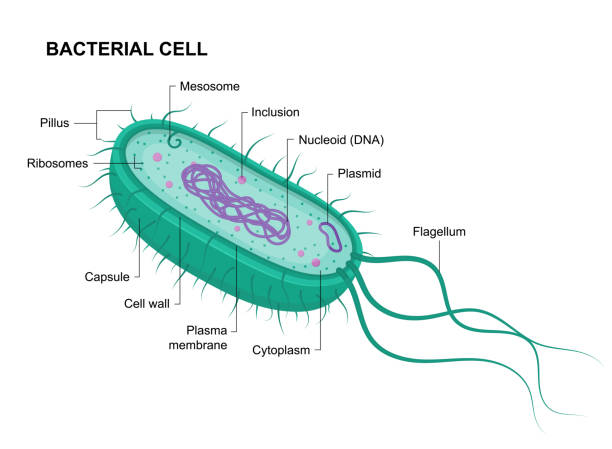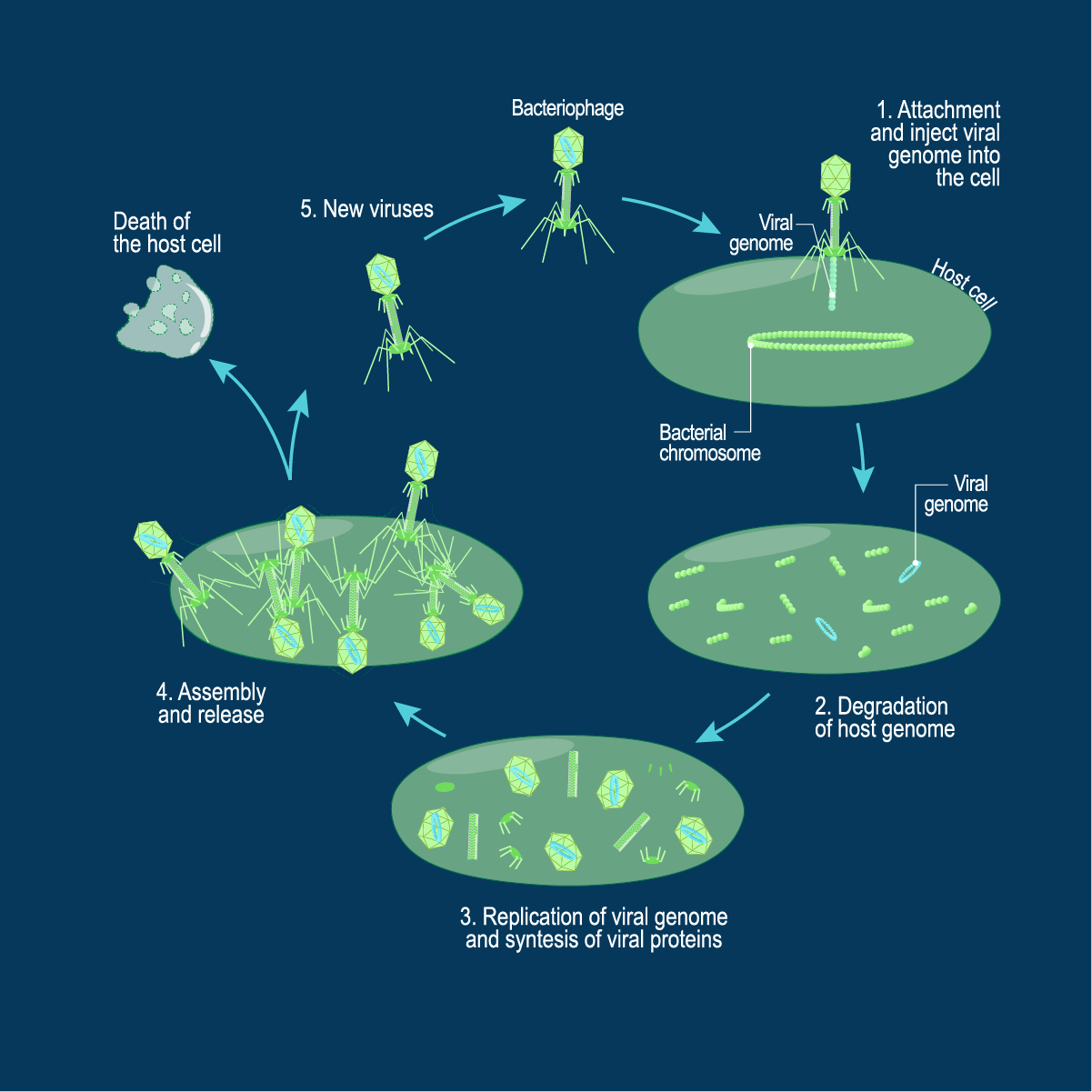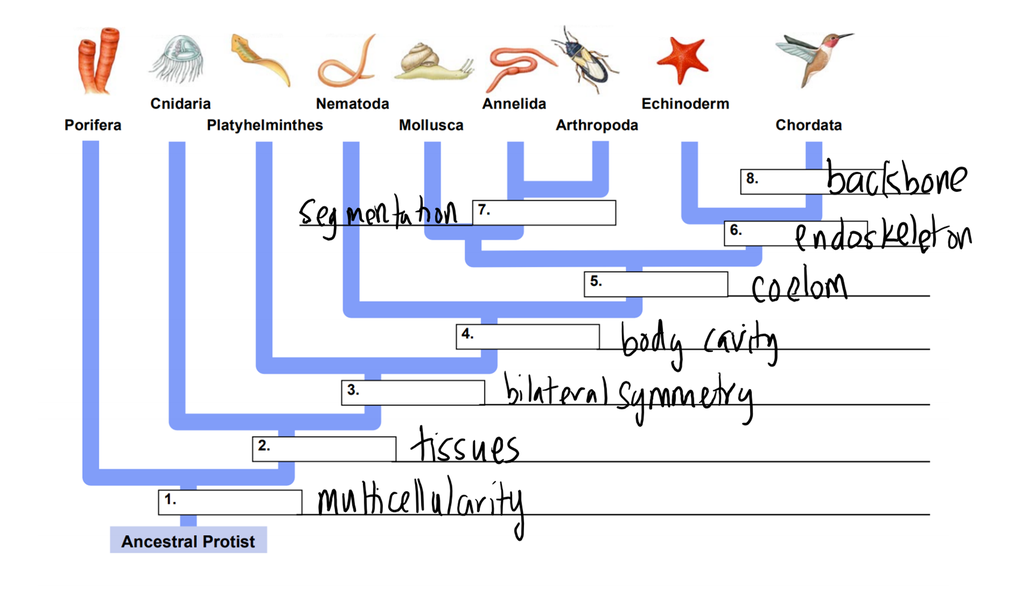Biology Exam --> Diversity of Life
5.0(2)
5.0(2)
Card Sorting
1/81
Study Analytics
Name | Mastery | Learn | Test | Matching | Spaced |
|---|
No study sessions yet.
82 Terms
1
New cards
structural diversity
a type of biological diversity that is exhibited in the variety of structural forms in living things, from internal cell structure to body morphology
2
New cards
prokaryote
A unicellular organism that lacks a nucleus and membrane bound organelles --\> smaller
3
New cards
Eukaryote
A cell that contains a nucleus and membrane-bound organelles --\> larger and more complex
4
New cards
What are the 3 domains
1. Prokaryote: Bacteria
2. Prokaryote: Archaebacteria
3. Eukaryotes
5
New cards
What are the 6 kingdoms
1. Plants
2. Animals
3. Protists
4. Fungi
5. Archaebacteria
6. Eubacteria
6
New cards
Dichotomous key (not sure we need this)
an identification tool consisting of a series of two-part choices that lead the user to a correct identification
7
New cards
autotroph
an organism that creates its own food and energy --\> photosynthesis
8
New cards
Heterotroph
An organism that cannot make its own food and gets its nutrients and energy from consuming other organisms
9
New cards
Plantae Kingdom Characteristics (with example)
eukaryote, multicellular, autotrophs, sexual, and cell wall is made up of cellulose. Ex. Maple tree
10
New cards
Protista Kingdom Characteristics (with example)
Eukaryote, uni and multicellular, autotrophs, heterotrophs, asexual, usually no cell wall, if cell wall it's made out of cellulose. Ex. Amoeba
11
New cards
Fungi Kingdom Characteristics (with example)
Eukaryote, mostly multicellular, heterotrophs, sexual, cell wall out of chitin. Ex. mushroom
12
New cards
Animalia Kingdom General Characteristics (with example)
Eukaryote, multicellular, heterotrophs, sexual, no cell walls. Ex. Rabbits
13
New cards
Bacteria Kingdom Characteristics (with example)
Prokaryote, unicellular, autotrophs and heterotrophs, asexual, cell wall made out of peptidoglycan. Ex. Staphylococcus
14
New cards
Archaea Kingdom Characteristics (with example)
Prokaryote, unicellular, autotrophs and heterotrophs, asexual, cell wall not made out of peptidoglycan, usually no cell wall. Ex. Sulfolobus archaea
15
New cards
How can you classify bacteria?
Their shapes and groupings, but also the structure of their cell walls.
16
New cards
3 Basic forms of bacteria
1. Spherical
2. Rod
3. Spiral
17
New cards
4 Bacteria Groupings
1. Mono - bacterial cells are singular and un-attached.
2. Diplo - 2 cells attached
3. Strepto - cells arrange themselves in a chain
4. Staphylo - cells clustered as grapes
18
New cards
Gram positive
Bacteria that have a cell inner cell membrane and outer, thick cell wall made of peptidoglycan.
19
New cards
gram negative
Bacteria that have an inner cell membrane, a thinner cell wall made of peptidoglycan and an additional outer protective membrane. These bacteria are more resistant to antibiotics and are therefore dangerous as pathogens
20
New cards
Bacteria diagram

21
New cards
Capsule
A gelatinous material that completely covers the cell. It's protective function is that it makes ingesting the bacteria unpleasant to predators.
22
New cards
Cell wall
made of peptidoglycan which prevents too much water absorption and prevent the cell from bursting
23
New cards
Cell membrane
the semipermeable membrane surrounding the cytoplasm of a cell. It synthesizes new cell wall and capsule material, is responsible for transport in and out of cell, and controls cell respiration and photosynthesis activity
24
New cards
pilus (pili)
hairlike extensions used for adhesion (cell-sticking). They can also be used to exchange DNA in conjugation if they are sex pili
25
New cards
flagella
long tails that are used for movement
26
New cards
Mesosome
an extension of the membrane that DNA attaches to during binary fission
27
New cards
Hereditary material (chromosome and plasmids)
DNA coiled into a circular molecule ( chromosome). There is only one such molecule. Plasmids are small circles of DNA in the cytoplasm of the bacterium that contain other genes that are not found on the chromosome.
28
New cards
Ribosomes
used for protein synthesis --\> smaller than those in eukaryotic cells
29
New cards
coccus
A spherical micro-organism
30
New cards
bacillus
Rod shaped micro-organism
31
New cards
Methanogenesis
unique metabolism to Archaea which is a biological (or chemical) process that produces methane as a by-product
32
New cards
Cyanobacteria
Bacteria that can carry out photosynthesis
33
New cards
Bacteria habitats
Most are mesophiles, meaning they occupy environments with moderate conditions. Some are extremophilic. They can live in environments with or without oxygen.
34
New cards
Archaea habitats (with examples)
They are extremophiles, meaning they occupy extreme environments. ex. deep sea vents, hot springs, volcanic crater lakes, mine drainage lakes, salt lakes, inland seas, cattle guts, landfill sites, sediments of swamps
35
New cards
binary fission
asexual form of reproduction used by most prokaryotes (and some eukaryotic organelles) in which a cell divides into 2 genetically identical cells (or organelles)
36
New cards
conjugate
a process in which there is a transfer of genetic material involving 2 cells
37
New cards
endospore
dormant bacterial cell able to survive for long periods of time during extreme environmental conditions. Not yet found in archaea.
38
New cards
virus
a structure that contains strands of DNA or RNA surrounded by a protective protein coat; it cannot live independently outside of cells. Viruses do not meet all criteria, so they aren't living organisms. Must invade cells and use host cell's machinery for survival and reproduction. They aren't cellular, so no cytoplasm, membrane-bound organelles, or cell membranes. Harmful.
39
New cards
capsid
outer protein layer that surrounds the genetic material of a virus
40
New cards
replication
the fundamental process of all cells, in which the genetic material is copied before the cell reproduces
41
New cards
lytic cycle
the replication process in viruses in which the virus's genetic material uses the copying machinery of the host cell to make new viruses
42
New cards
lysogenic cycle
the replication process in viruses, in which the viral DNA enters the host cell's chromosome; it may remain dormant and later activate and instruct the host cell to produce more viruses
43
New cards
lytic cycle diagram

44
New cards
Step 1 of Lytic Cycle
Virus attaches itself to a bacterial cell. The virus is a very simple structure, composed of a protein capsid, nucleic acid, and a tail section.
45
New cards
Step 2 of Lytic Cycle
The virus enters the cell and injects its nucleic acid. The nucleic acid makes viral proteins with the help of the cell's ribosomes. The proteins sever the DNA of the cell.
46
New cards
Step 3 of Lytic Cycle
The virus's worthless capsid and tail separate from the cell and disintegrate. The viral nucleic acid takes control within the cell and drives the synthesis of additional virus proteins and nucleic acid
47
New cards
Step 4 of Lytic Cycle
Virus proteins and nucleic acids come together to form new viruses.
48
New cards
Step 5 of Lytic Cycle
The viral nucleic acid produces proteins that induce the host bacterial cell to lyse (burst), resulting in the cell's death. Many new viruses are now able to infect other cells.
49
New cards
Animal Characteristics
1. They are eukaryotic, multicellular, and don't have cell walls
2. They're heterotrophs that usually ingest and then digest food
3. They're usually mobile, or can move, in at least one stage of life
4. They reproduce sexually and produce embryos that undergo stages of development
50
New cards
invertebrate
An animal without a backbone --\> 95% of this kingdom
51
New cards
vertibrate
An animal with an internal skeleton and a backbone
52
New cards
Other characteristics to classify animals
1. levels of organization
2. number of body layers
3. symmetry and body plans
4. body cavity
5. segmentation
6. movement
7. reproduction
53
New cards
layers of organization
Animals are classified on the basis of differences in structure, tissues, and organ systems. Animals have varying levels of structure and complexity in organ systems like the digestive, nervous, respiratory, and circulatory systems
54
New cards
number of body layers
all animals except sponges and those in Phylum Cnidaria (corals, hydras, jellyfish, anemones) have 3 layers of cells. These layers are the ectoderm (outer), mesoderm (middle), and endoderm (inner). These layers develop early on in the early stages of growth in embryos. This development helps sort cells into an arrangement that produces specialized tissues and organs in the adult animals. In humans, ectoderm produces skin, nervous tissue, and some sense organs. The mesoderm produces muscles, blood, kidneys, and reproductive organs. The endoderm produces lungs, liver, pancreas, bladder, and stomach lining.
55
New cards
Symmetry and body plans (with examples)
Different arrangements of cells, tissues, and organs lead to different body plans. Some have asymmetrical body plans, meaning their body shapes are irregular (ex. sponges). some have radial symmetry, meaning they can be divided along any place parallel with the body axis. Dissected from the top, every side is symmetrical (circular) (ex. corals and jellyfish). Some have bilateral symmetry and can be divided into two mirror halves only along one place through the central axis. Each side is symmetrical. (ex. worms, insects, and vertebrates like turtles or humans).
56
New cards
body cavities
Some animals have digestive tracts and other organs suspended in a fluid-filled body cavity called the coelom (space for the development and suspension of organs and systems). Animals with coeloms (ex. worms, molluscs, insects, and vertebrates) are called coelomates. Animals without are called acoelomates (ex. jellyfish, flat worms, corals).
57
New cards
Why are coeloms important
For animals, this gives their muscles a structure to brace against, allowing them to move and respond quicker. Also allows for development of more complex organ systems. Ex. digestive tract can grow longer than the body cause it can bend and fold back on itself within coelom. In more complex animals (vertebrates), the coelom is subdivided into separate cavities around the heart and lungs and digestive tract.
58
New cards
segmentation
Some animals like worms and scorpions are segmented, meaning the body is divided into repetitive sections or segments. One advantage is that if a segment is damaged, the others can continue functioning properly. Mobility is also more effective because segments move independently which allows for more complex patterns of movement.
59
New cards
movement
the evolution of nerve and muscle tissue that allows the development of complex and fast movement. Some animals (sponges and sea anemones) are sessile, or stationary as adults. This means they're attached to one place. Sessile animals have a body form that can move during juvenile stages of development.
60
New cards
reproduction
Most animals reproduce sexually with gametic reproduction. External fertilization is when gametes combine outside the body. Zygotes are produced by either external or internal fertilization. External is common for aquatic animals. Internal occurs when egg and sperm meet inside female body. Some animals can reproduce asexually, such as some aphids. They alternate between sexual and asexual modes depending on tough conditions.
61
New cards
Sponges (porifera)
no distinct tissues or organs, have specialized cells, no symmetry, sessile (as adults)
62
New cards
Cnidarians (with examples)
Tissues but no organs, radial symmetry, predators (tentacles surround gut opening, extracellular digestion --\> releases enzymes into gut cavity and absorbs by cells lining guts). Ex. jellyfish, hydra, sea anemone, coral
63
New cards
polyp
tube-shaped, sessile body form of cnidarians
64
New cards
medusa
umbrella-shaped, free-swimming body form of cnidarians
65
New cards
Platyhelminthes
Flatworms --> tapeworm, planaria. They're mostly parasitic, bilaterally symmetrical, first animal with cephalization (development of head, brain, sense organs), top end and posterior end, concentration of sense organs in head, increase speciation in body plan
66
New cards
Nematoda
roundworms, bilaterally symmetrical, body cavity (pseudocoelum \= simple body cavity), digestive system (tube running through length of body), many are parasitic (hookworm)
67
New cards
mollusca
mollusks (slugs, snails, clams, squid), bilaterally symmetrical, soft bodies (mostly protected by hard shells), true coelom (increases complexity and speciation of internal organs)
68
New cards
annelida
segmented worms (earthworms, leeches), segments (increase mobility, redundancy in body sections), bilaterally symmetrical, true coelom
69
New cards
arthropoda
(spiders, insects, crustaceans), most successful animal phylum, bilaterally symmetrical, segmented (specialized segments, allows jointed appendages), exoskeleton (chitin + protein)
70
New cards
arthropod groups
arachnids (8 legs, 2 body parts), crustaceans (gills), insects (6 legs, 3 body parts)
71
New cards
echinodermata
(starfish, sea urchins, sea cucumber), radially symmetrical as adults, spiny endoskeleton
72
New cards
Chordata
Vertebrates (fish, amphibians, reptiles, birds, mammals), internal bony skeletons (backbone encasing spinal column, skull-encase brain)
73
New cards
Fish (with examples)
bony and cartilaginous skeleton, jaws and paired appendages (fins), scales, gills for gas exchange, two-chambered heart (single loop blood circulation), ectotherms, external fertilization (external development in aquatic egg) ex. salmon, trout, sharks
74
New cards
amphibian (with examples)
legs (tetrapods), moist skin, lungs and diffusion through skin for gas exchange, three chambered heart (veins from lungs back to heart), ectotherms, external fertilization (external development in aquatic egg, metamorphosis (tadpole to adult). ex. frogs, salamanders, toads
75
New cards
Reptiles (with examples)
dry skin, scales, armour, lungs for gas exchange, three-chambered heart, ectotherms, internal fertilization (external development in amniotic egg). ex. dinosaurs, turtles, lizards, snakes, alligators, crocodiles
76
New cards
Birds (aves) (with examples)
feathers and wings, thin, hollow bone (flight skeleton), very efficient lungs and airsacs, four-chambered heart, endotherms, internal fertilization (external development in amniotic egg). ex. finches, hawks, ostrich, turkeys
77
New cards
Mammals (with examples)
hair, specialized teeth, lungs, diaphragm, four-chambered hearts, endotherms, internal fertilization (internal development in uterus, nourishment through placenta, birth live young, mammary glands make milk). ex. whales, ferret, elephants, bats, mice, humans
78
New cards
Mammal subgroups
1. Monotreme
2. Marsupial
3. Placental
79
New cards
monotreme (with examples)
Egg laying mammals, lack placenta and true nipples. ex. platypus, echidna
80
New cards
marsupials (with examples)
pouched mammals, offspring feed from nipples in pouch, short-lived placenta. ex. koala, kangaroo, opossum
81
New cards
placental (with examples)
true placenta (nutrient and waste filter). Ex. shrews, bats, whales, humans
82
New cards
animal phylogenetic tree
